For rotifer culture two easy reefs® microalgae species are used: Nannochloropsis (80%) +Tetraselmis (20%).
The dosage will depend on the number of rotifers reached. The average consumption is of 4 ml Easyroti per litre of rotifer culture per day (25% of rotifer will be harvested every day).
To keep a rotifer culture follow the directions below:
Material needed:
3 cylinder flasks of 2 L with slow bubbling.
Rotifer inoculums.
Food needed:
easy reefs® Nannochloropsis (80%) +Tetraselmis (20%)
Culture cycle from strain: 5 days
Recommended sea water density: 1019, although they can be cultured well up to 1022.
Culture temperature: 22ºC to 28ºC. Optimum culture temperature: 24ºC.
To filter the rotifer you should use a 50 micron net.
Once you start the culture you will be able to harvest rotifers after 6 days. You will have one flask for the “strain” and another one for the “production” culture.
The information that follows describes the dosage to be used in ideal conditions assuming that the rotifer density is the ideal. Sometimes it is possible that the amounts of microalgae that are being added do not adjust to the rotifer demand. This is because in aquariums people don’t count rotifers, so the amount of microalgae added is not exact to the amount of rotifer. If the culture water gets clear this would mean that the amount of microalgae wasn’t enough. If rotifer remains with no food for more than 4 hours, the number of eggs will decrease and so will the population growing yield. It is essential that the rotifer always have food.
Rotifers are very sensitive to changes of water parameters. Rotifer population would be affected if the water quality decreases. If you observe an excess of dirtiness in the cylinder then you should filter the rotifer and start the culture in a new clean flask and add the amount of microalgae needed.
Depending on the intensity of the green colour that the flask has, this will indicate the amount of microalgae needed. With time and experience, the difference in green colour will let us do our own feeding protocols. There is no difference in using live or Easyroti as food.
We will put a glass tube with a gentle air bubbling (5-10 bubbles per second) in the graduated flask used for the rotifer culture. This air bubbling will provide a homogeneous mixture in the culture. An excessive water movement will make rotifers to loose their eggs and this way they won’t hatch.
It is recommended to feed twice a day. But due to the lack of time, rotifers are usually fed once a day.
DAY 1
Initial conditions: “Strain” culture with 500 mL of sea water, number of rotifers 400 rot./mL to 600 rot./mL and 4 ml of Easyroti Nannochloropsis (80%) +Tetraselmis (20%).
Final conditions: The culture will end up with a volume of 1L with microalgae.
Instructions: Resuspend 4ml of Easyroti in 0.5 L of sea water. Add the rotifer inoculums and add sea water until the total volume is 1 Litre.
DAY 2
Initial conditions: 1 L of rotifer culture. It will be nearly clear and with no microalgae. Estimated rotifer number: 500 rot/mL
Final conditions: The culture will end up with a volume of 1.4 L with microalgae.
Instructions: Resuspend 4 ml of Easyroti in 0.5 L of sea water and add 0.4 L to the rotifer culture.
DAY 3
Initial conditions: 1.4 L of rotifer culture. It will be nearly clear and with no microalgae. Estimated rotifer number: 500-600 rot/mL
Final conditions: The culture will end up with a volume of 1.8 L with microalgae.
Instructions: Resuspend 8 ml of Easyroti in 0.5 L of sea water and add 0.4 L to the rotifer culture.
DAY 4
Initial conditions: 1.8 L of rotifer culture. It will be nearly clear and with no microalgae. Estimated rotifer number: 600 rot/mL
Final conditions: The culture will end up with a volume of 2 L with microalgae.
Instructions: Resuspend 6 ml Easyroti in 0.25 L of sea water and add 0.2 L to the rotifer culture.
DAY 5
Initial conditions: 2 L of rotifer culture. It will be nearly clear and with no microalgae. Estimated rotifer number: 700-800 rot/mL
From this “strain” culture we will get a volume of 0.5 L to start a new “strain” culture in another 2 L flask and start a new culture cycle from day 1.
We will add Easyroti to the old “strain” culture, from now on “production” culture, until it reaches 2 L. If the cylinder is very dirty then we will pour the culture to a clean flask and carry on with the production culture.
Instructions: To the “production” culture we will add 8 ml of Easyroti in 0.5 L of sea water. For the “strain” culture start a new cycle from day 1.
DAY 6
Initial conditions: “Strain” culture the same as day 2. “Production” culture 2 L with 800 rot/mL, it will be nearly clear and with no microalgae.
The “production” culture would be used to harvest 0.5 L every day and be used as food for the aquarium (If you don’t feed the aquarium you must do the harvest anyway so you can feed the rotifer with microalgae). If you harvest 0.5 L of rotifer you always have to add 0.5 L of sea water with 8 ml of Easyroti .
The “production” culture will be kept until the flask is dirty (5-7 days).
When the “strain” culture reaches day 5 of culture it will be converted to the “production” culture and a new “strain” culture will be created, the same way as it has been explained on day 5.
Easyroti formula is based on the classic Guillard F/2 is suitable for the culture of Tetraselmis, Nannochloropsis, Isochrysis and Rhodomonas, among others.

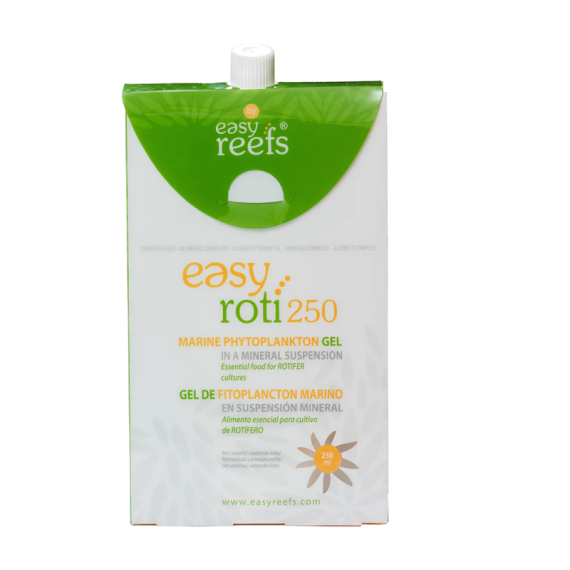


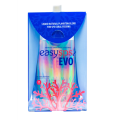

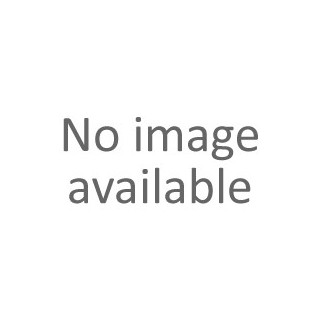
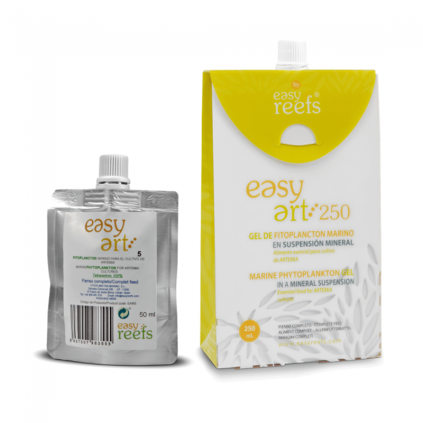
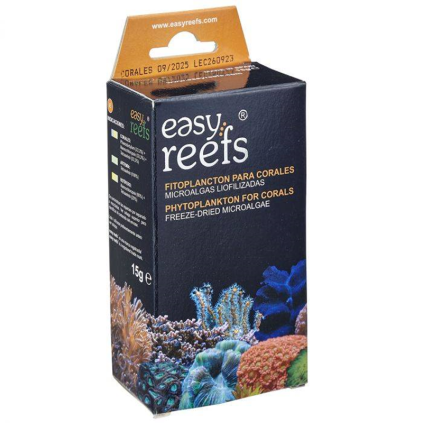

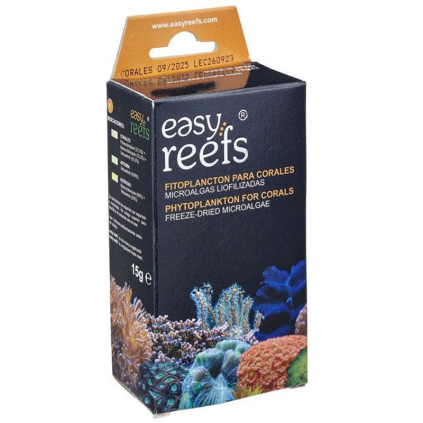


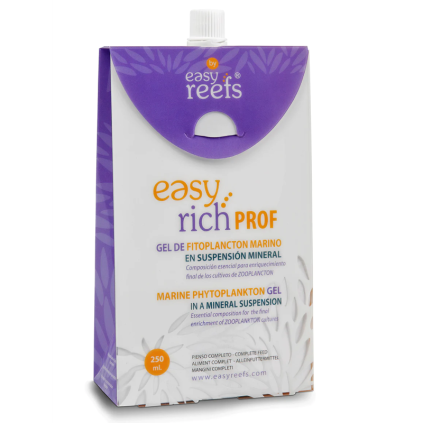

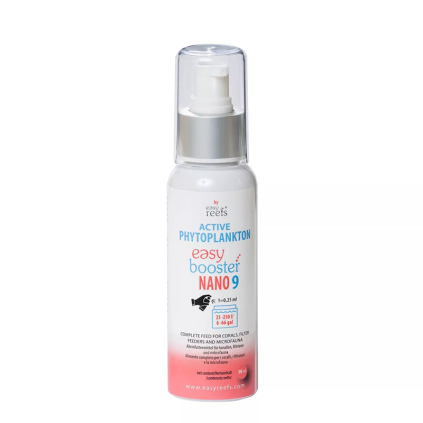
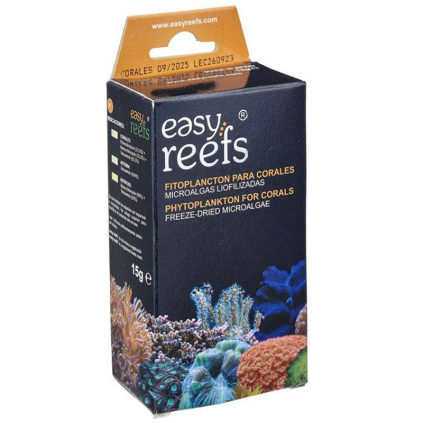

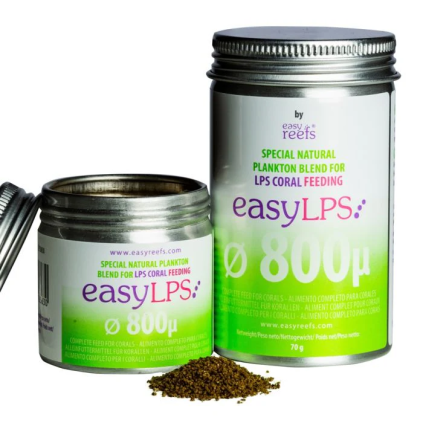

Legg igjen en anmeldelse